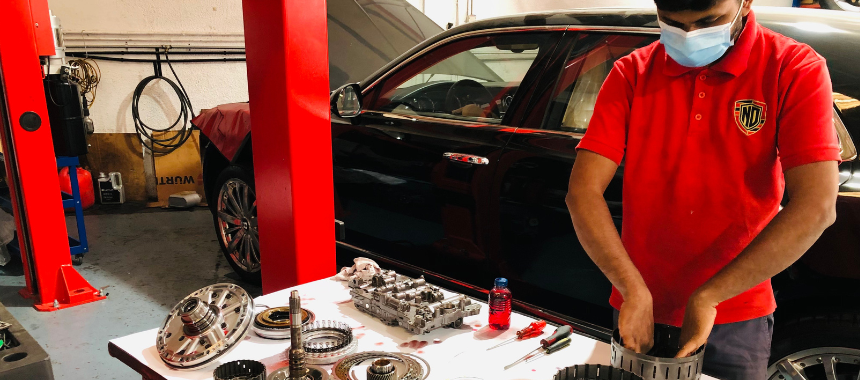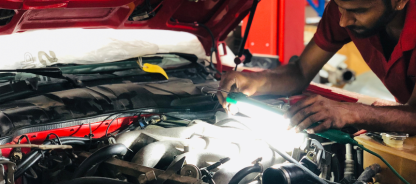What Causes Transmission Problems?
Your vehicle’s transmission is one of its most essential components. Whether you drive an automatic or manual, transmission problems can quickly turn into costly repairs. But what exactly causes car transmission failure, and how can you prevent it?
In this comprehensive guide, we’ll explore the top causes of transmission problems, how to identify early transmission failure symptoms, and the best ways to maintain a healthy automatic or manual transmission.
Understanding the Transmission System
The car transmission system is responsible for transferring power from your engine to the wheels. It allows your vehicle to change speeds and function efficiently. There are several types:
- Automatic Transmission
- Manual Transmission
- Continously Variable Transmission (CVT)
- Dual-clutch Transmission
Regardless of type, transmission issues usually stem from wear, heat, fluid problems, or lack of maintenance.
Common Causes of Transmission Problems
Transmission issues don’t happen overnight. Here are the most frequent culprits behind them:
1. Low or contaminated transmission fluid.
This is the most common cause of transmission failure. Transmission fluid lubricates, cools, and cleans internal parts. Over time, fluid breaks down due to heat and friction or becomes contaminated with debris.
2. Worn-out clutch (Manual Transmission)
In a manual transmission, the clutch connects and disconnects the engine from the transmission. Over time, friction wears down the clutch plate.
3. Transmission Solenoid Failure
Solenoids regulate the flow of transmission fluid inside an automatic transmission. Electrical faults or fluid issues can cause them to fail.
4. Overheating
Excess heat is a transmission killer. It causes fluid to break down and components to warp, reducing the lifespan of your transmission.
5. Electrical and sensor failures
Modern transmissions are controlled by computer modules that rely on sensor inputs. If sensors malfunction, they can send incorrect data, resulting in poor performance or complete failure.
Signs Your Transmission Is Failing
A failing transmission doesn’t usually break down without warning. Most drivers miss early red flags, turning minor issues into major repairs. Learning how to recognize the signs of transmission failure can save you thousands in repair costs and prevent your vehicle from becoming undriveable.
Below are the most common symptoms of a bad transmission — whether automatic or manual — along with what each one means.
1. Slipping Transmission
One of the most serious and noticeable transmission issues is slipping — when the engine revs, but your car doesn’t respond properly.
What it feels like:
- Your car suddenly changes gears without warning
- You lose power while accelerating
- Engine revs increase, but speed does not
2. Delayed or harshed shifting
When your car won't shift gears smoothly, it may feel like a hesitation or jolt during gear changes — especially in automatics.
- Hesitation before shifting into drive or reverse
- Rough or jerky gear changes
- Difficulty shifting at higher RPMs
3. Transmission Fluid Leaks
Unlike engine oil, transmission fluid is not meant to burn off or decrease. A leak indicates a serious problem.
How to Identify it:
- Reddish or pink puddle under your car
- Burnt smell inside the cabin
- Visible fluid on transmission pan or lines
4. Unusual Noises while Driving
Strange noises are often one of the earliest transmission failure symptoms — and they should never be ignored.
Common Sounds
- Grinding when shifting (manual)
- Whining or humming (automatic)
- Clunking or knocking during gear changes
5. Warning Lights on Dashboard
Many vehicles are equipped with trasnmission sensors that trigger the Check Engine or dedicated Transmission light when a problem is detected.
When to be concerneed:
- The light appears along with any of the above symptoms
- OBD-II scan reveals transmission-related codes (P0700 series, etc.)
How to Prevent Transmission Failure
Regularly chech and change transmission fluid
Your first line of defense against transmission failure
One of the most effective ways to extend the life of your vehicle’s transmission is to regularly check and change the transmission fluid. Transmission fluid isn’t just a lubricant—it’s a coolant, a cleaner, and a hydraulic fluid that keeps your transmission operating smoothly.
Neglecting this basic maintenance can lead to slippling gears, overheating, and even total transmission failure
Avoid Aggressive Driving or Overloading
Protect your Transmission with Smart Driving Habits
Your transmission is designed to handle a wide range of driving conditions, but it's not invincible. Aggresive driving and overloading your vehicle are two of the fastest ways to wear out or damage your transmission—especially automatic systems.
By driving responsibly and staying within your vehicle’s weight limits, you can significantly reduce the risk of transmission failure, overheating, and premature wear.
Get Professional Transmission Inspections
Why regular expert check can save you thousands
Even if your transmission seems to be working fine, hidden issues could be quietly building up beneath the surface. That’s why it’s essential to schedule professional transmission inspection—especially if your vehicle has high mileage, is used for towing, or is showing even minor signs of trouble.
A trained mechanic can catch small problems before they become major, potentially saving you from a transmission rebuild or full replacement, which can cost you a fortune.
Final Thoughts
Transmission problems can lead to expensive repairs and vehicle downtime, but they’re largely preventable. Whether you drive a manual or an automatic, regular maintenance, fluid checks, and being aware of early warning signs can help you avoid a full transmission rebuild or replacement.
Is your vehicle showing signs of transmission failure? Don’t wait—visit a certified mechanic or transmission repair shop today to avoid further damage.






